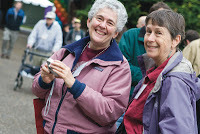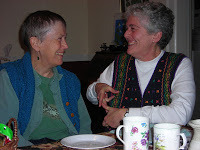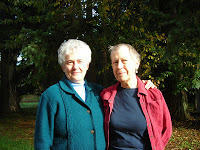Deborah J. Ross's Blog, page 139
September 27, 2013
Winding Down To A Still Point
This is my first experience being with someone who is dying
slowly. I’ve lost loved ones suddenly, without any chance to say goodbye. I’ve visited
and taken care of friends and family during a terminal illness, but not for
this length of time or this close to the end. Hospice has provided not only
printed information of what to expect, but a variety of support personnel who
function as educators as well as helpers. I was reasonably well prepared for
the physical changes in my dying friend, but the rhythms in her decline have
come as a surprise.
I – and most of us, I suspect – live my life with a greater
or lesser degree of ritual. My days are structured with the things I do
regularly, without much in the way of decision making, whether it’s my morning wash-up
routine, the things I do when I sit down to work, preparing dinner and sharing
it with my family, and so forth. The week has its own schedule, even though I
work at home. I admit to having expectations about how each day will unfold,
what commitments I have and what blocks of “discretionary” time. Although it’s
been said that expectations are premeditated resentments (when it comes to our
agendas for how other people live their lives), we humans seem to do better
when things are at least slightly predictable. It’s exhausting to live in a
state of not knowing what might happen next.
And yet that’s an aspect of caring for the dying. The
doctors have told us the likely progression of the disease (in this case,
ovarian cancer that has metastasized to the lungs). Hospice has provided
booklets on “When Death Is Near,” that explains the processes most dying
patients go through – withdrawal, closure, loss of appetite and thirst,
confusion, unconsciousness, and so forth, as well as various changes in the
body and its functions. They were careful to note that not all patients have
all the symptoms, or in this order. The piece that either wasn’t there or I
didn’t comprehend was that this is an inherently volatile, unstable, and
unpredictable process.
My friend is dying peacefully. We are able to keep our
commitment to her, which is to alleviate and prevent air hunger, and to keep
her as comfortable as we can. Much of the time, she drifts into and out of
consciousness. I sit with her, as I am doing as I write this, and she looks
like she’s taking a nap, propped up on pillow in her hospital bed in the living
room. When I returned to this essay after one of the inevitable breaks, she had
badgered her other caregivers into taking her in her wheelchair into her garden
in the rain, after being largely bedridden for over a week. I would never have
predicted that!
About two weeks ago, she was sitting up on her own, talking
with great animation to two videographers for a project on the stories of
cancer patients. I brought out her red tango shoes, the ones with heels the
same height as the size of one of her lung tumors. She proceeded to arrange her
oxygen feed and demonstrate a tango step with one of her interviewers. Two
weeks before that, she had gone tango dancing with a portable oxygen tank,
which she handed to her partner to carry, along with a quip about having to dance
really close. None of us had expected such a precipitous decline.
The decline isn’t regular in pace, and that’s what is
unexpected to me. Instead of a straight moderately-angled downward line, it
plummets like a descent into an oceanic abyss, then levels off and even rises
slightly, as it did this afternoon. I have no idea when those drops will occur
or how much decline will take place each time. Some changes affect us
caregivers more than the dying person. For example, we went through a number of
consecutive days where we had to modify the medication dosage and scheduling in
order to achieve the same degree of comfort and breathing. At other times,
there’s nothing we can do except adapt to the changes in the patient’s
condition.
What am I, as a writer as well as a friend, to make of this?
Living day-to-day and sometimes hour-to-hour gives new meaning to slogans like “Live
in the Now” or “One Day At A Time.” In real life, it’s exhausting and
heartbreaking, even when I accept that my friend is not going to get better,
that’s she’s going to “wind down” until at some moment over which neither she
nor I have any control, she will die. This does not make good fiction, even
good tragedy. Fiction works because it has shape, which is seen most clearly in
plot but must be present also in character and other aspects of the story. Even
if I were to write a piece in which nothing “happens,” other than a character
gets progressively weaker and more debilitated, less autonomous, and finally
dies, that in itself would not be an effective story. What happens during that decline is the important aspect of fiction,
whether it’s the journey to closure – or the struggle and failure – of the
dying person or the effects on the people around her, those things can have intention,
tension, complication, and resolution.
As I write this, I think, If only real life could have that degree of emotional coherence, and not
be, as Mark Twain said, “One damned thing after another.”
I wonder if the “shape” of fiction, that aspect that gives
us such deep satisfaction, is also present in potential in real life, if only
we could learn to pay attention to it. We get so attached to What does this mean? and How does it end? because these are the
questions that fiction addresses (among other things). After all, in our
ordinary lives, it means whatever meaning we ascribe to it, and it ends in our
own death.
Maybe the answers aren’t The
Secret Clue or Happily Ever After.
Maybe they’re How am I alive this moment?
What do I feel? How does Spirit move in my life? How do I open myself and respond
to the Spirit I see in another human being?
How do we dance
together, oxygen tanks and all?

Published on September 27, 2013 18:24
September 21, 2013
Singing Kaddish
Because my friend is dying
I went on to the land she loves
To say
Kaddish for my mother,
Under fir trees, through overgrown thistles
Past the echoing barn,
The last holdouts of summer blackberries,
Following a horse trail,
a goat
trail,
a deer trail,
a labyrinth
carved by the generations: Exodus.
A cricket told me where to rest,
There by the single daisy,
the Queen
Anne’s lace.
Thorns snatched at the fringes of my prayer shawl.
I prevailed.
We do prevail, said the twilight.
We prevail from our ashes,
in the
sea
in the
cedar grove
on the mount
on the
mountain
at the wall
at the wailing of the day.
I traced the Aramaic letters,
stumbling
like a stranger to my own faith.
And then, as if in the beginning,
Bereshit,
A voice rose up through me,
A song that made itself up as it went.
This memory is all I have of you.
This moment is all we have ever had of one another.
This grief is a verb.
This peace is always, always becoming what it will be.
Deborah J. Ross
17 Tishrei 5774

Published on September 21, 2013 21:12
September 17, 2013
Healing Stories From The Heart
I know this journey well, for it was one of the lifelines
that carried me back from my personal
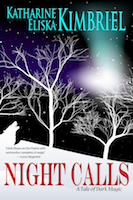
abyss, which I’ve written about before
and will do so again. I have heard a dozen variations of what brought writers
to their knees and how they found the words to spin despair into hope. Although
particular circumstances differ, as does the degree of incapacity, we have
enough in common to recognize our kinship. We are those for whom the
stories-of-the-heart have been a beacon, a sustenance, and a means of growing
even stronger as we heal.
Sometimes, the very act of writing – no matter what the
subject matter – helps us to focus. There’s nothing like a thorny plot twist or
a challenging bit of dialog to distract us from other problems. Joseph Conrad
said, “It’s work that saves us,” and this is as true for writing as for any
other endeavor. Stories, unlike so much of real life, must have structure and
meaning.
Some stories, on the other hand, do more than provide a
framework for intellectual problem-solving. Whether they are characters,
situations, or entire worlds we know and love, or whether they arise during our
time of crisis, they speak to us – they call to us. They give us a voice.
Perhaps a new voice, perhaps one we have lost or that life has battered out of
us. Or maybe it is simply that when we are pushed to the wall, emotionally or
physically, we need to connect with what gives us joy. Wellsprings of secret
delight and unabashedly un-guilty pleasures. And healing.
As I said, I’ve been through my own version of the journey.
So when I read this from Katharine Eliska Kimbriel, her words resonated deeply
with me:
I've been fighting
illness for fifteen years, too. I've spent my life savings...saving my life. I
still cannot not work at an office job. But I can edit up a storm, and I have
an Allie book to finish. That is the reason I kept going. This is the series of
my heart, the adventures of Alfreda
Sorensson.
One reviewer wrote, “Night
Calls will leave you with . . . the feeling that though there may
be dangers in the world, the powers of goodness and knowledge can overcome.”
Anyone can dump their anguish onto the page, writing for their
own benefit and not necessarily to communicate to a reader. To be sure, such
writing has therapeutic benefit for the writer and in the hands of a skillful
writer can be turned into something of value, often dark and edgy. Several of
my short stories written in crisis eventually made their way into print, and I’m
grateful to have had an editor’s objective judgment in that process.
These “cries from the darkness” stories are quite different
from “calls from the light.” The latter are the stories that nourish us through
sorrows, that keep us going while our hearts and bodies heal, and that give us
something to live for. In 1984, a number of women on the US Olympic track team
trained at the gym where I worked out. I’d never seen anyone work so hard
physically. They’d pin an image where they could see it as they strained and
sweated to their physiological limits – a focus, a goal, a reason. Some stories
are our equivalents. That’s what I hear when I read Kathi’s description of the Alfreda books.
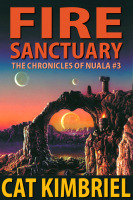
Kathi is in her bones a thoughtful and complex writer with a
great sensitivity to character development and relationship. My introduction to
her work was the Nuala novels, which
I wrote about in “Radiation,
Polyamory, and Adventure: Katharine Eliska Kimbriel's "Nuala" Series.”
I’ve had the joy of reading a short story featuring Allie and her family, and
can hardly wait to read more. Dark fantasy with a hint of the numinous, as
Sherwood Smith observed. A story with heart. And hope.
Here’s more details on Night Calls
“When you have the
Gift, your life is not your own.”
I was born to a family
that harnessed the winds and could read futures in fire and water. Yet my
mother kept her secrets.
Then the werewolf
came, sharing his madness.
Now it’s my turn to
keep secrets….
Night Calls is available
in ebook format from Book View Café.
Print on Demand paper versions from Lightning Source and Create Space will
follow. Kindred Rites appears in
December, and the third book comes out in Spring 2014.

Published on September 17, 2013 14:30
September 13, 2013
A Community of Love
Horse people form extraordinary, loyal, and sometimes
contentious communities. The same is true for readers (and writers!) of science
fiction and fantasy. (And for martial artists, and musicians, and . . .) When
two or more of these interests coincide, the results can be magical.
The second volume of The
Seven-Petaled Shield, titled
Shannivar, touches many of the areas of passion in my life. A strong woman
hero, a martial artist, a horsewoman, her wonderful horses, a love story (me
being a romantic at heart), a quest . . . One of the people I’ve shared a love
of horses and adventure with is my friend Bonnie, about whom I’ve written in
the last few posts.
Bonnie and I became fast friends over folk dancing and wild
adventures during our college student days in the 1960s. Later, when she
fulfilled her dream of owning horses, she carried me back to my own high school
years, when I rode my own horse over the golden hills. When I’d visit, we’d
ride together, clean stalls together, talk endlessly about horse temperaments
and training, and swap tall tales “in the saddle.”
Much to my delight, Bonnie
began studying tai chi chuan, which I had practiced for 4 or 5 years
before being seduced by kung fu (30 years total). During those years, I’d
delved into the women sf/f writers martial arts cabal. One of those adventures
took place at a women’s martial arts camp, where I took a seminar in tai chi
sword. I’d kept the sword even after I switched to kung fu, and earlier this
year I brought it up for Bonnie to use in her sword form class.
It was therefore luminously clear to me that the Dedication
to Shannivar belonged to Bonnie. Who
else would understand the references to gaited horses (Bonnie rode Tennessee
Walkers), the strategies of a long distance horse race, or the enchantment of a
dance when all elements come together as a glorious whole? The only question
was whether she would still be here to see its publication.
For the several years while I worked on revising the trilogy
as a whole, all 3 books at once and scheduled for release 6 months apart, her
health declined slowly and I was hopeful. And close-mouthed. Then everything
changed with her hospitalization and greatly shortened prognosis. Shannivar was due to be released in
December, and I feared she wouldn’t make it that long.
I sent off an email to Joshua Starr at DAW, my publisher,
and explained my concerns. The book was well into production. I’d proofread the
pages and seen both the preliminary cover sketches and the final painting. But
the ARCs would not come along for a little while. Josh printed up and bound a
copy with a mock up cover (the painting, but not the final design) and mailed
it to me out here.
I presented it to my friend. Thank you from both of us to
Josh, and Kate and Betsy and everyone at DAW.
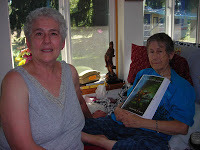
Deborah and Bonnie
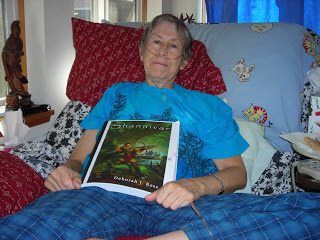
Bonnie

Published on September 13, 2013 20:08
September 11, 2013
World-Building, Dying, and the Memory Lane of Comfort Foods
The brochure from hospice inform me that as a dying person’s
body winds down, appetite becomes erratic and diminishes. The sense of taste
changes so that formerly favorite foods are no longer appealing. The person
eats less when they do eat. Finally,
many dying people refuse all food. This can be complicated because throughout
human cultures, offering food is a way of expressing love. The dying person may
continue to eat in order to please a loved one, but in the end the demands of
the body prevail.
Besides nourishing our bodies, sometimes past the point of
health and into diet-related diseases, food is laden with symbolic meaning. We
celebrate with festive meals; we soothe ourselves with favorite treats from our
childhood; we give candy to our sweethearts. Even the term “sweetheart” refers
to sweetness, a taste, as do “honey” and other endearments. Taste and smell are
the most basic, “primitive” senses, so our expressions of care go zing! right into the oldest portions of
the brain.
For me, one of the most enjoyable aspects of world-building
is creating different cuisines for each culture or social class, ethnic group
or family. While it may be true that just about every cuisine has some version
of pancake-rolled-around-filling, stew modeled on the canned stuff in American
supermarkets shouts “generic fantasy!”
Just as every family seems to have their
own special recipe for spaghetti sauce or meatloaf, you can devise variations
on the same dish. Sometimes these variations might reflect notions about what
is suitable food for people of different ages, different social status, or even
genders (“manly meals” or “kiddy food” or salads-are-for-women). Even within
these variations, not everyone has the same taste. Some may be innate (how
cilantro tastes is genetically determined), or influenced by personal history
(travel, associations with significant events or relationships) and health
status.
Which brings me again to caring for a terminally ill friend,
in particular providing meals for her. She jokes about taking a trip down the
memory lane of the foods she’s enjoyed during her life. Her tastes have become
nostalgic, erratic to the point of whimsical, but fleeting. Some of the things
she’s asked for are cream of mushroom soup, watermelon, Stouffer’s macaroni and
cheese, buttermilk biscuits from scratch (which I do know how to make), hot
dogs with sauerkraut, salami, and vanilla ice cream with lemon sorbet for
breakfast. No pickles with the ice cream, at least not yet, although she jokes
about the food cravings of pregnancy. Life is indeed uncertain, so she eats
dessert first.
The food comes with memories, of course. “Do you remember
the time we ate this when we were students and…” or “I made this recipe while horse
camping on Mt. Hood…” or “my father used to cook this for a special occasion…”
I think the same is true for everyone, but the awareness that time is limited,
that the number of times you will eat this dish or reminisce over the
adventures that once accompanied it are not limitless, adds a special
poignancy. As my friend’s appetite wanes, she eats less in amount and
frequency. There’s a shift from the fullness of having eaten to the sensory
pleasure of eating to the anticipation, the idea
of that particular food. If there is a sense of re-visiting the past – comfort and
celebration, adventure and sharing – there is also a gradual farewell.

Published on September 11, 2013 12:44
September 7, 2013
Don't Hurry Up
From the time we’re small children, it seems that someone is
always urging us to hurry up, to not

Photo by Cleo Sanda
dawdle, to stop procrastinating, to keep “on
target,” and to do things faster. We are supposed to race through our lives without
paying attention to the wonders around us (except, of course, when we’re
supposed to be observant and appreciative). Of course, what is wonderful to a
child is all too often invisible to the harried parent or teacher who herself
has deadlines and schedules to keep. Homework assignments are Important;
watching snails is not.
When I began to write professionally, I found myself juggling
motherhood, a day job career, and the inner-driven need to set down the stories
in my head. Writing time was precious and all too scant, and I had much to
learn about the craft. My initial style involved “pantsing” (writing “by the
seat of your pants”) or, as I put it, “taking a flying leap off the edge of
reality, ” and then revising, revising, revising. As a consequence of this and
the limited, fractured time periods available to me, my stories progressed slowly.
I remember meeting a certain published author at one of my first convention,
who breezily talked about how he never revised, he sold his first draft novels,
and he produced three or four of them every year. I cringed to think of my one
or two short stories and maybe one novel draft in that same time period
(keeping in mind that I needed three or four – or more! – revision drafts). Was
this what professional writers did? I wondered. And how was I ever going to
produce that much, that fast, and of that professional quality?
(As a slightly smirky footnote, I have no idea what happened
to that writer. I haven’t seen the byline in decades, so maybe that strategy
wasn’t so successful after all. Or the name might have been changed, as so
often happens. Me, I have four traditionally-published novels and an ebook
short fiction collection coming out this year.)
To my great good fortune, I also encountered writers who had
learned to listen to their own creative rhythms and understood that getting the
story right trumped getting it fast. These were not writers who use “I listen
to my inner muse” as an excuse for not writing, or who polish endlessly and
never submit their work. These were professional, published authors. Some of
them sold many books and others only a few. Not all were genre writers, but all
prized their craft. I met writers who considered a day successful if they got a
single paragraph exactly the way they wanted it; others measured their daily
productivity by hours spent or pages finished. They opened my eyes to many
possibilities for measuring progress besides how fast I could turn out a
manuscript.
As it turns out, I found that different stages of a story
call for different speeds. I work best when I draft quickly from outline and then
revise slowly. I give myself permission at all stages to take a break and think
about a “stuck place” (whether that is a block in the sense of “I have no idea
what comes next” or just a niggling feeling that something isn’t right). I go
for a walk, I clean house, or I pick up the phone and chat with a friend about
something utterly unrelated to writing. When I’m willing to do this, I end up
in fewer dead ends, I need fewer subsequent drafts, and I’m more in touch with
the internal fabric of the story.
All this has a great deal to do with observing and accepting
my own creative rhythms, but also with patience. Patience loops the topic back
to my opening, which is how we find our way back being fully present with what
is unfolding at the present moment and at a pace too often at odds with the
regimented, overcommitted, multi-tasking, hurried expectations around us (not
to mention the financial pressures for a working writer to produce so many
books a year). It’s all very well to recite slogans like, “Stop And Smell The
Roses,” and quite another to shield ourselves from those expectations.
I’ve been blessed with several Teachers of Patience and I’m
trying to take what I have learned from them and apply it to my work. One of my
most significant teachers was an elderly Quaker woman, who welcomed me when my
husband and I began attending the local Meeting. She and I had many wonderful
conversations before she died a few years ago, some at Meeting or the monthly
potlucks, others at our lunch dates. She walked very slowly due to various
medical conditions, but I quickly realized how important it was to accord her
the dignity of doing what she could, of being autonomous. She did need my help
from time to time, with opening doors and such, and she taught me ways of
offering or responding that maintained that relationship of respect. It became
a spiritual exercise to adjust my own walking speed to hers, to hold the door
for as long as she needed, to move with her as if in a slow-motion dance. Adagio,
not Presto. So much of the joy of writing is discovering new experiences, new
points of view, stories told by characters who are not like us and who live in
worlds not like our own. Here was a precious chance to experience living at a
different pace.
Now I am staying with my best friend during the final weeks
of her life. She, too, is moving slowly, more slowly with each passing day as
her body winds down. I watch her savoring every moment, paying attention to her
strength, which varies from day to day but it never what it was when she was
healthy. Slow means taking the time to be as fully alive and present as
possible. Slow means reordering priorities (eating dessert first, as it were,
choosing only the most precious things to spend waning energy on). Slow means
savoring the meadow at sunset, perhaps with a cup of hot chocolate and a dear
friend.
Take your time; there’s no need to hurry.

Published on September 07, 2013 17:22
September 5, 2013
Year-End Gifts
Now is the time when Jews around the world prepare for the
new year by examining their conduct and “making teshuvah.” Teshuvah means
“return,” as in returning to our source, re-turning to our best selves. It’s often
practiced by saying, publically and privately, “If in the past year I have done
anything to harm or offend you, I am truly sorry and I ask your forgiveness.”
(Can you imagine a world in which the leaders of the most powerful nations said
that to the peoples of the least powerful?) It is considered a mitzvah to do this. Mitzvah means commandment, but it also means blessing and
declaration. We offer ourselves in blessing to one another (and, if you are a
theist, to the Eternal) in our willingness to admit our shortcomings and our
renewed determination to make the world a better, less broken place (“tikkum olam,” or “repairing the world”).
So I say this to you, who are reading my words: It has never
been my intention to harm you but if I have done so, by anything I have said or
done, or failed to say or do, I am truly sorry.
My personal focus during this season of renewal is different
from what it has been in the past. The
world is full of sorrows, as so many traditions point out, sorrows that cannot
be mended by human means. There is absolutely nothing I can do to alter the course
of my friend’s disease (ovarian cancer).
There is much I can do to ease her final weeks.
I’m awed and astonished by the grace with which my friend is
approaching this passage. You can read her story in her own words here. Her two grown
children are with her today, as is one of their partners and her wonderful
husband. We’ve had lots of storytelling, lots of memories, and not a few laughs.
Friends and neighbors have filled their freezer with food, although she tires
easily and can't handle too much company. They’ve set me up in the little RV
across the yard from the house, and I can see a single cream and peach rose still
blooming in the garden.
Oregon is currently doing its water-from-the-sky thing. It's
as if the sky is anticipating grief. The barn and pasture are empty, the last
horse having gone to live with a trusted friend. The garden, in past years so
well tended, still yields a richness of tomatoes and squash and a few late
raspberries. The apple and plum trees are bowed under the weight of the fruit,
but the blueberry bushes are bare.
Much of what I do is give the family caregivers a break, hug
anyone who needs it, rub shoulders and backs, offer food when people are hungry
and silence when they’re tired, drive and run errands, but most of all, I listen.
I want so badly to make things better – to repair the world of these people I
love, to give my friend another decade or three – that it’s easy to forget the
biggest gift I can offer is a silent mind and an open heart.

Published on September 05, 2013 21:27
August 31, 2013
Puppy, Loss, and Change

Darcy at 16 weeks
On Book View Cafe blog, my husband has been blogging about our life and adventures with Darcy, which are now coming to a close. Darcy will be returning to his breeder, who will find him an owner capable of training him to his full potential.
Despite all our care and knowledge about dogs, our age (both of us in our mid-60s) and other competing demands on our energy made it increasingly difficult to give Darcy the training and attention that an smart, intense, high-drive dog needs. This was especially true since at 4 months, Darcy is entering adolescence and testosterone is upping the intensity. Even so, we have given him a foundation of house manners, basic commands (sit/down/come/leave-it/loose-leash walking) and excellent socialization with other dogs. He plays happily with the neighbor's two Labradors, who are big enough to enjoy the kind of rough and tumble that so often characterizes German Shepherd Dogs. At his breeder's, he'll have a chance to play with his sister until he goes to a new home. He's a confident, outgoing dog.
What brings our "temporary parenthood" to a close is a larger, human drama. Today I will be leaving for another state to help care for my dear friend and her family in the final weeks or months of her life. I posted pictures of us a few days back. She's asked me to be present when she dies. I feel honored and humbled by the request. One of the hard realities is that Dave, my husband, cannot manage Darcy alone. So life changes act like dominoes, one cascading into another. Life gets shaken up, fractured into pieces we sometimes don't even recognize. The shapes and colors are foreign, and yet as they settle into their new configuration, they find a harmony there as well. We know, intuitively if not in so many words, that change has brought us everything we love, but that all those things are ours "on loan." We are stewards, not owners. Of land, of animals, of the hearts of those we love and who love us. When these things pass from us, we honor them with our grief.
Darcy goes to the prospect of a full and happy life, doing work he and his ancestors were bred for. I go to offer myself to help ease my friend's passage, to fill her days with the joys of a long friendship, to care for her family. Dave has farewells and awakenings of his own. Our journeys are not identical, nor should they be. He will hold the space for me to return, my anchor, just as I do for him.
Lesson for today: Don't wait to tell the people you love how you feel.

Published on August 31, 2013 20:12
"The Hero of Abarxia"

I'm so glad to see When The Hero Comes Home 2 is now available, partly because I'm tickled to be in an anthology with some amazing writers, and partly because my story, "The Hero of Abarxia," is a special favorite of mine. All right, I confess, all my stories have their places in my heart. Why would I submit anything less than a story I'm in love with myself?
In my novel-length work, I'd been revisiting my love of horses and the horse characters (one might say, the horse heroes) in The Seven-Petaled Shield, most particularly the middle volume, Shannivar, due out in December from DAW. So when this anthology opened up, that part of my creative mind pricked her ears, tossed her mane, and invited me to come for a gallop. And what a ride it was! This was one of those stories that just writes itself. I hope you enjoy reading it as much as I did writing it!
The anthology is edited by Gabrielle Harbowy and Ed Greenwood, and also features stories by Chaz Brenchley, Mercedes Lackey, Juliette Wade, Cliff Winnig, Fanny Darling, and a whole bunch of other fine writers. The ebook edition contains bonus stories not found in the print version, and it's available now at a discounted price.
epub/Nook version.
mobi/Kindle version.

Published on August 31, 2013 09:03
August 29, 2013
Deborah and Bonnie - Friends Since 1965
Published on August 29, 2013 17:27

